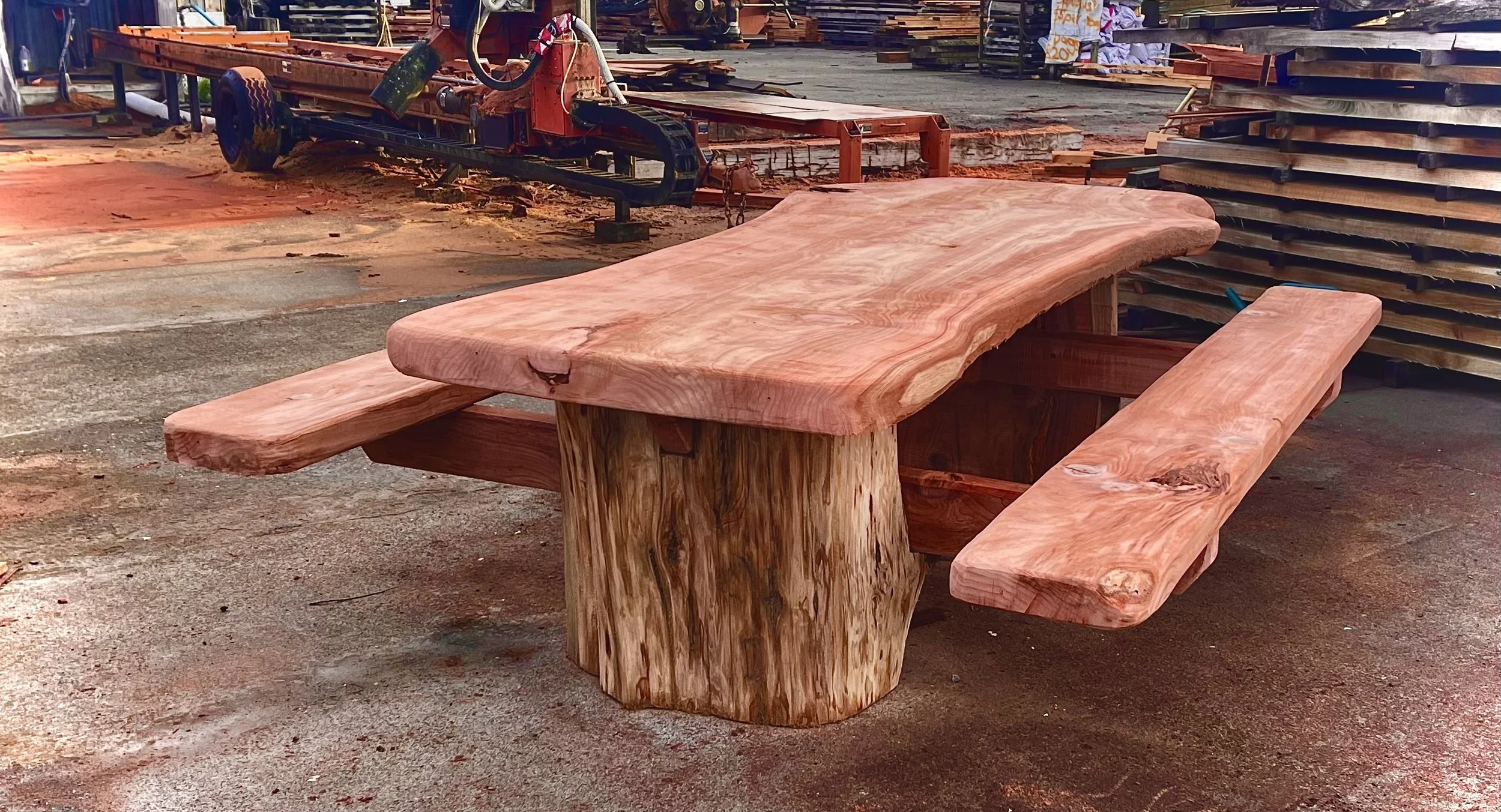Plankville's Guide to Building Custom Outdoor Benches
Step-by-Step Using Slabs or Flitches
Sitting on a timber bench you've built yourself is an unparalleled experience. Building a DIY timber bench in NZ with slabs or flitches gives you a practical and beautiful seat for your garden or deck. This guide from Plankville shows you how to make your own bench, from picking the wood to smoothing and protecting the finished product.
Why Choose Slabs or Flitches for Your Bench?
Logs are cut into slabs and flitches often keeping the live edge and natural grain that gives wooden furniture its appeal. These pieces suit those who want a bench that catches the eye—you won't find this at your local hardware store. Each slab or flitch shows the unique traits of its tree making your bench one of a kind.
At Plankville, we provide New Zealanders with picked slabs and flitches from sustainable sources. If you're new to working with natural wood, we can guide you to pick a piece that matches your taste and skill set.
Step-by-Step: Building Your Outdoor Wooden Bench
1. Pick the Right Slab or Flitch
Your first step is to pick your wood. You can go with macrocarpa, totara, or recycled native timber. Just make sure the piece you choose is dry, flat, and at least 40mm thick to ensure it's stable. If you want to seat 2-3 people, a longer flitch (1.2-1.8m) works best.
You can check out our Plankville timber slabs collection to see lots of options. We have everything from raw-edge flitches to pieces with smoother finishes.
2. Pick Your Bench Style
You have two main styles to think about:
Floating slab bench: Set up the slab on steel or wooden legs showing off its natural edges.
Block-style bench: Go for thicker slabs or timber offcuts as legs, to create a solid grounded look.
Pick a style that fits your space—floating benches give a lighter modern feel, while block styles add a rustic anchored vibe.
3. Get the Timber Ready
Before you put it together prep your slab:
Sanding: Begin with 40–60 grit to get rid of rough areas then move up to 120–180 grit to achieve a smooth surface. Preserve the live edge if it's not too splintery.
Flattening (if necessary): You can plane the top or keep it raw to create a more organic appearance.
Cleaning: Get rid of all dust using a tack cloth or vacuum.
If your timber isn't pre-dried, store it in a sheltered dry place for several weeks to cut down on warping.
4. Build or Install the Legs
When you're making wooden legs, cut and sand them to the height you want—about 450mm for seats. For metal legs, make sure they have powder coating to use outdoors and match your wood's color.
Fix the legs firmly with threaded inserts or strong wood screws. Drill holes first to stop splitting with native or reused wood.
5. Finishing and Sealing
A good outdoor finish will guard your bench from New Zealand's changing weather. Here are your choices:
Oils that soak in like tung oil or Danish oil to get a natural flat look
Outdoor polyurethane to get tougher shiny protection
Wood sealer or decking oil to keep out the most water
Put on at least two coats, and sand between them to get the best outcome.
Why DIY Outdoor Seating Is Worth It
Building furniture with your own hands brings a deep sense of satisfaction—when it becomes a centerpiece in your garden, patio, or even commercial space. A custom bench made from Plankville slabs or flitches doesn't just cut costs; it also showcases your style and skill.
What's more, our team stands ready to offer guidance on finishes, joinery choices, or wood upkeep. Visit our Timber Resources page to find more ideas and how-to guides.
Tips from the Plankville Workshop
If your bench will sit on grass, put treated timber legs or concrete pavers underneath to cut down on moisture damage.
To make it more comfy, use a belt sander to shape or round the front edge of your slab.
If your bench faces harsh sun or salt air, apply oil or sealant again each year.
Conclusion
You don't need fancy tools or years of woodworking know-how to build your own DIY timber bench in NZ—just a beautiful slab, a solid plan, and some patience. Using slabs or flitches lets you showcase the raw beauty of native timber while making something useful, long-lasting, and full of your own personal touch.
If you're set to begin your bench project, check out our current wood selection or reach out to our Plankville crew for custom-cut choices or help with design.

